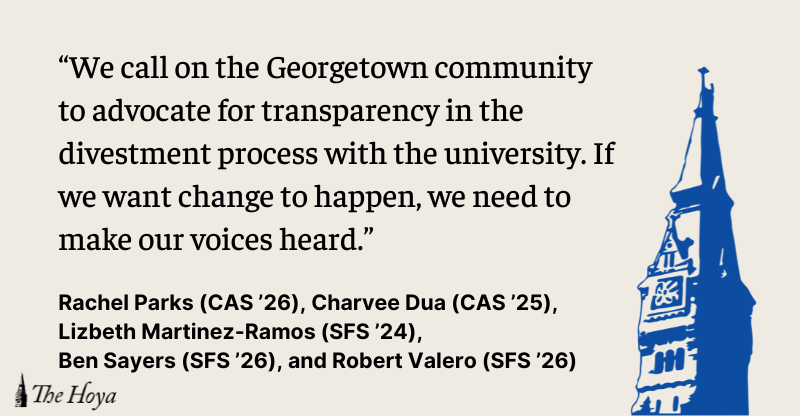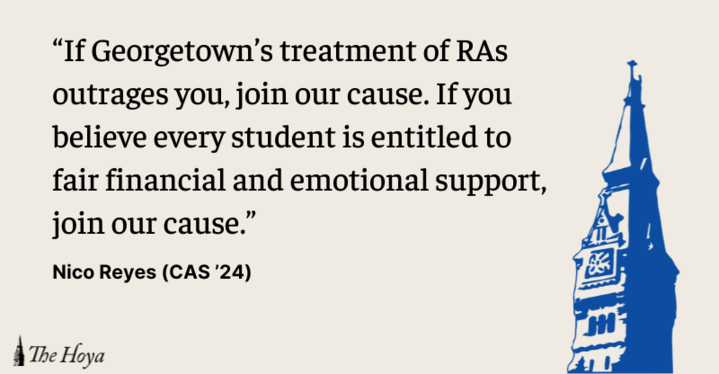Inflation — it is a simple little word for a basic economic concept. Yet this idea strikes fear in economists, pundits and average citizens alike. Economic inflation, the rise in prices that makes each dollar capable of purchasing less than before, should be a cause of concern for students here at Georgetown — after all, their choice of school comes with the enormous costs of tuition, housing and local victuals. But there is a far more threatening and less noticeable inflation that affects Hoyas even more directly: grade inflation.
Grade inflation, defined by Merriam Webster as “the assigning of grades higher than previously assigned for given levels of achievement,” recently appeared on the Georgetown radar when the economics department, a long holdout to this trend, succumbed to internal and external pressure and revised its grading curve for most classes from 35-25 percent A’s, 50 percent B’s and 25-15 percent C’s (or lower) to 40 percent A’s, 45 percent B’s and 15 percent C’s (or lower). Haven’t heard about this radical shift? Don’t blame yourself: The economics department and the university itself did not make it a point to inform students of the change. Nevertheless, the ramifications of this change are clear — in some economics classes, an extra one-fifth of students could potentially be receiving A’s or A-‘s compared to past years.
Yet the economics department is only the latest example in a long line of academic “hyperinflation” (extreme grade inflation) on the Hilltop. The Hoya brought up the issue of grade inflation at least once per year in 1998, 2000, 2001, 2002, 2005, 2007, 2008 and 2009. Major reports on the matter were released by the Georgetown University Committee on Intellectual Life in both 1997 and 2007. The results were quite astounding: According to the aforementioned 2007 report, from 1974 to 2006, the average grade point average of graduating seniors jumped 0.37 points, from 3.05 to 3.42. In 1974, 26.5 percent of grades received were A’s; in 2006, this figure had skyrocketed to a ridiculous 54.8 percent.
Is this trend occurring because Georgetown students today are smarter or work harder than those of the past? Besides the obvious hubris in discounting the bright minds of previous graduating classes, the same 2007 Committee on Intellectual Life report found that students today study less, party more and spend more hours in time-consuming and academically distracting internships and extracurricular activities than at any time in the past. Clearly then, something larger is at work.
Nevertheless, some Hoyas’ reaction to this news might be similar to how I first responded: This is good news! More A’s mean higher grades, and higher grades mean better job prospects and happier parents. Unfortunately, this train of thought is misguided. Grade inflation may be raising the “physical value” of the GPA, but at the same time it is decreasing the value’s actual worth.
Just as economic hyperinflation in 1920s Germany transformed money into worthless blocks of paper, so too grade hyperinflation at Georgetown and across the country is turning students’ hard-earned GPA into a useless indicator of academic success. When grade inflation was low, each point of GPA was “worth” more: earning a 3.7 GPA was a huge accomplishment and set one apart from other students when the average GPA was near 3.0. But what does a 3.7 mean when nearly half of all Georgetown seniors graduate with honors? In fact, some companies have stopped considering GPA when hiring new employees out of college because they can no longer correlate strong work ethic and intellectual capacity with the grades earned from classes.
Georgetown students are paying over $50,000 a year for an education that is progressively becoming less challenging, less satisfying and less useful for obtaining a job after graduating. Undergraduates are departing Georgetown with high GPAs only to realize they actually don’t know much. The need for in-job academic proficiency reviews and training sessions are steadily increasing. Clearly, grade inflation needs to be abated.
Though grade inflation at Georgetown has largely been perpetuated by external trends and influences, the time has come for the university to make tough decisions. It is time for professors to be willing to give students poor grades. It is time for students to accept poor grades when they haven’t put in the work necessary to do well in a class. It is time for Georgetown to challenge students again and for students to accept the challenge to do work “beyond the average.” Only then will Georgetown rise above grade inflation, and in doing so, become the sort of university its students deserve.
Michael Fischer is a sophomore in the School of Foreign Service. He can be contacted at fischerthehoya.com. Postscript appears every other Thursday.
To send a letter to the editor on a recent campus issue or Hoya story or a viewpoint on any topic, contact [email protected]. Letters should not exceed 300 words, and viewpoints should be between 600 to 800 words.














